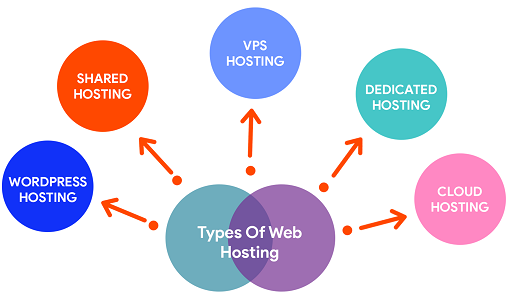A domain is the name that is associated with a physical IP (Internet Protocol) address on the Internet. A domain name is an easy to recall address (location of a website) that the visitors of a website type into their browsers to find and access that website. Different networking contexts use domain names and a network domain can be identified by a domain name. Domain names are also used for addressing purposes and for application-specific naming. An IP resource, such as a server hosting a website, or the site itself, is represented by a domain name. It is a website’s equivalent to a physical address. Any website’s permanent address on the Internet is indicated by its domain name.
Domain names aid in establishing a unique identity. Hence, these are meant to identify Internet resources. Domain names provide such names to numerically addressed resources of the Internet, which are easy to recognize as well as remember. The simple, text-based, identification labels of domain names help to find out easily an Internet resource’s ownership.

Domain names function under the DNS (Domain Name System). The DNS can be understood as the Internet’s address book. The DNS directs the visitors of a particular site to that website by translating the domain name into its corresponding IP address number sequence and subsequently detecting the resource’s location. Any name that gets registered in the DNS is essentially a domain name. A domain name registrar, who publicly offers his services, usually administers the registration of domain names.

Determines data’s transfer between a host and a web browser.

Divides domains into smaller segments for communication purposes or for other reasons.

It refers to the exact location of a page, post, file and asset file extension (images& documents).

“You never get a second chance to make a great first impression”. The URL (Uniform Resource Locator), in which your domain name is included, is the first thing that your site’s visitors get to see. This amplifies the importance of ensuring that your site has the right domain name, which is easy to remember, relevant, and interesting. Moreover, the keywords contained in your domain name can impact your SEO ranking. With the right domain name, the impact is positive. Last but not least, when you are selecting a domain name, you are utilizing an important opportunity to define your brand. The right domain name helps to enhance brand recognition.
Your domain name is more than a mere name, and by selecting the right domain name you can create a lasting positive impression. A “right domain name” is -
The organization of domain names happens into subordinate levels, known as subdomains, of the DNS root domain. TLDs (Top-level Domains) are the first-level set of domain names in the DNS hierarchy. The gTLDs (Generic Top-level Domains) and ccTLDs (Country Code Top-level Domains) are included in the top-level domains. Then there are the second-level and the third-level domain names, which rank lower than the top-level domains. The conditions related to the formation of domain names are dictated by the procedures and rules of the DNS (Domain Name System).
To recapitulate, domain names are organized as:


Our services are globally renowned and are the most trusted and the most preferred. We prioritize the requirements of our diverse clientele and ensure that the quality of our service exceeds the expectations of our clients. All of our affordable services are designed with a focus on delivering the finest quality of service that is supported at all times by an adept team of technical experts.
Register a new domain name, or transfer your existing domain to us, and we assure you of: